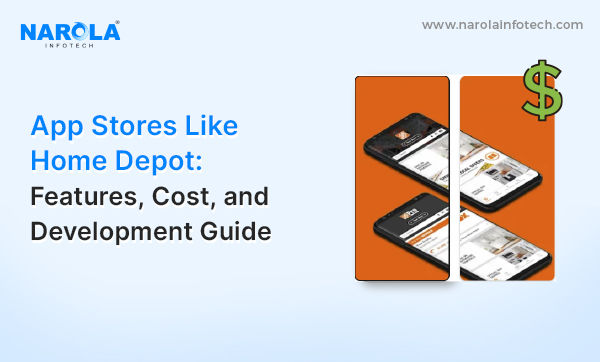Why Ecommerce ERP Integration Matters for Your Business
- NarolaInfotech

- Sep 3, 2024
- 3 min read
In today's digital landscape, businesses are constantly seeking ways to optimize operations, and ecommerce ERP integration is a powerful strategy for achieving this. By connecting your online store with ERP systems, businesses can streamline back-end processes, enhance efficiency, and foster growth. This article explores the fundamentals of ecommerce ERP integration, its key benefits, and practical steps for implementation, providing valuable insights into how this integration can transform business operations and drive online success.
What is Ecommerce ERP Integration?
Ecommerce ERP integration connects an organization's ecommerce platform with its ERP software system, allowing both systems to share and update data automatically. This eliminates the need for manual data entry and keeps important business information in sync. With this integration, businesses can easily access, manage, and analyze data from a single platform, without the hassle of switching between different software tools.
ERP and Ecommerce Integration Components

Smooth Data Sync
ERP-integrated ecommerce systems ensure all your data stays in sync in real-time, keeping information accurate and consistent across all platforms. This integration reduces errors and ensures every department is working with the most up-to-date data.
Unified Control Center
Integrating ecommerce with ERP systems brings all business operations—orders, inventory, and customer data—under one roof. This unified approach offers a complete view of your operations, making decision-making easier and boosting efficiency.
Automated Processes
When ecommerce and ERP systems are integrated, key business processes like order fulfillment, inventory management, and financial reporting can be automated. This reduces manual work, minimizes mistakes, and speeds up daily operations.
Instant Access to Data
Integration provides immediate access to accurate data on inventory levels, order statuses, and financial performance. This real-time insight helps businesses track their metrics and make quick, informed decisions.
Multi-Channel Capabilities
ERP-integrated ecommerce solutions support various sales channels like Shopify, BigCommerce, Amazon, and eBay. This integration ensures a consistent sales approach across multiple platforms, broadening reach and improving flexibility.
Streamlined Financial Operations
Integration helps automate sales data for financial reporting and analysis, making financial management easier. This improves accuracy, aids in budgeting, and gives a clear picture of financial health.
Centralized Customer Insights
An integrated system centralizes customer data, allowing businesses to manage customer information more effectively. This central hub helps offer personalized services, improve customer experience, and build stronger customer relationships.
ERP Integration Benefits for Ecommerce Businesses
Boosting Operational Efficiency
Integrating eCommerce with ERP systems streamlines business processes by automating data flow and reducing manual errors. This automation covers everything from order management to inventory control, minimizing paperwork and labor costs. With data stored securely and accessible in real-time, teams can work more efficiently and focus on scaling the business.
Elevating Customer Satisfaction
eCommerce ERP integration significantly improves customer service by providing real-time inventory updates, ensuring customers see accurate stock levels. Faster order processing and access to detailed customer sales data enable personalized service and tailored offers, enhancing customer loyalty. It also simplifies returns and exchanges, contributing to a smoother customer experience.
Real-Time Data Updates
A key benefit of eCommerce ERP integration is real-time data synchronization. This ensures accurate, up-to-date information across all systems, aiding in better decision-making. Real-time updates cover:
Inventory Levels: Prevents stockouts and overstock.
Order Management: Streamlines order fulfillment by reflecting new orders instantly.
Customer Data: Keeps customer details consistent for better service.
Financials: Provides up-to-date financial information for accurate reporting.
This synchronization helps businesses react quickly to market changes and customer needs, driving better outcomes.
How To Successfully Integrate ERP with Ecommerce
Plan Thoroughly: Start with a detailed plan that outlines your ecommerce goals and identifies how data will flow between systems.
Define the Project Scope: Evaluate your current systems and set clear goals for what you want the ERP integration to achieve.
Choose the Right ERP Software: Select an ERP system that fits your business needs and can scale as your business grows.
Configure the Systems: Customize and optimize the ERP system to match your business's unique workflows and processes.
Migrate Data Carefully: Clean and format your existing data, then migrate it to ensure it works seamlessly with the new ERP system.
Test Extensively: Perform thorough testing to ensure the integration works well and meets all business needs, fixing any issues that arise.
Train Your Employees: Provide training to your team so they can use the new system effectively and maximize its benefits.
Implement the ERP System: Launch the new ERP software, make it accessible to all relevant employees, and start using its automated features.
Maintain Regularly: Set up a regular schedule for maintenance, updates, and support to keep the system running smoothly and efficiently.
Integrating eCommerce and ERP systems can greatly benefit modern businesses by simplifying operations and boosting growth. This integration helps streamline processes, ensures accurate data, and improves the customer experience. With real-time data synchronization across all systems, businesses can make quick, informed decisions, adapt to market changes effectively, and stay ahead of the competition.
Source: Ecommerce ERP Integration











Comments